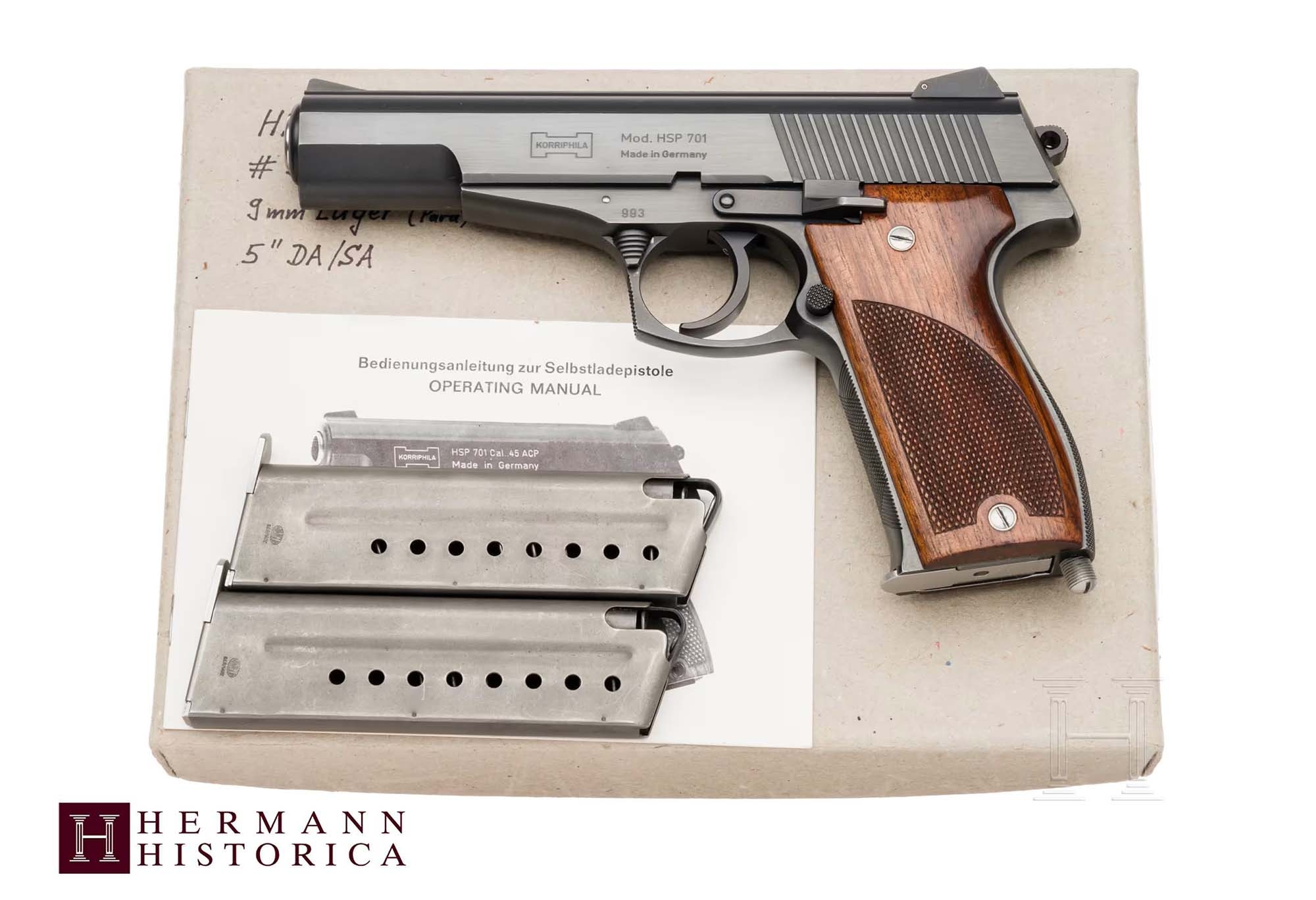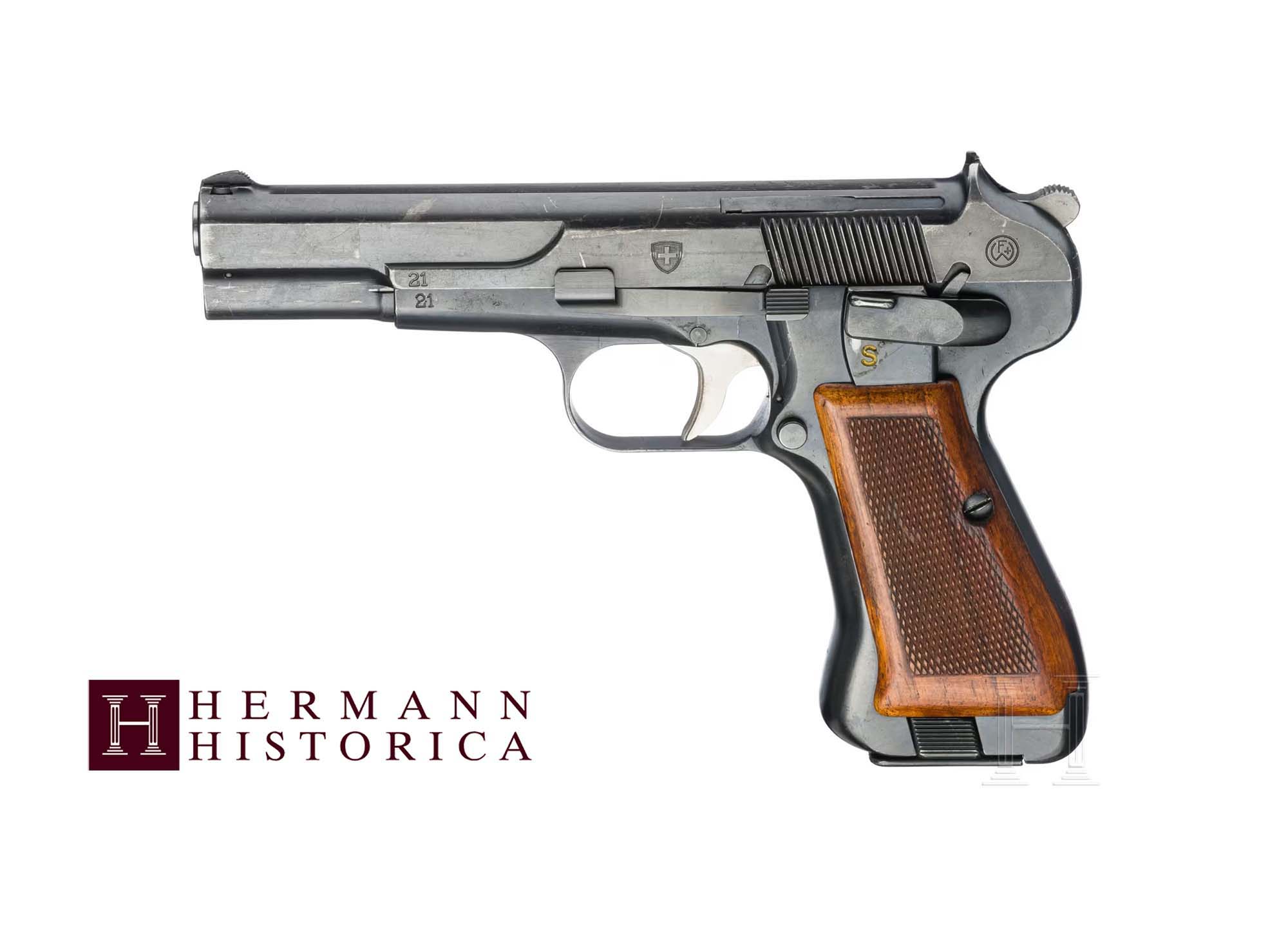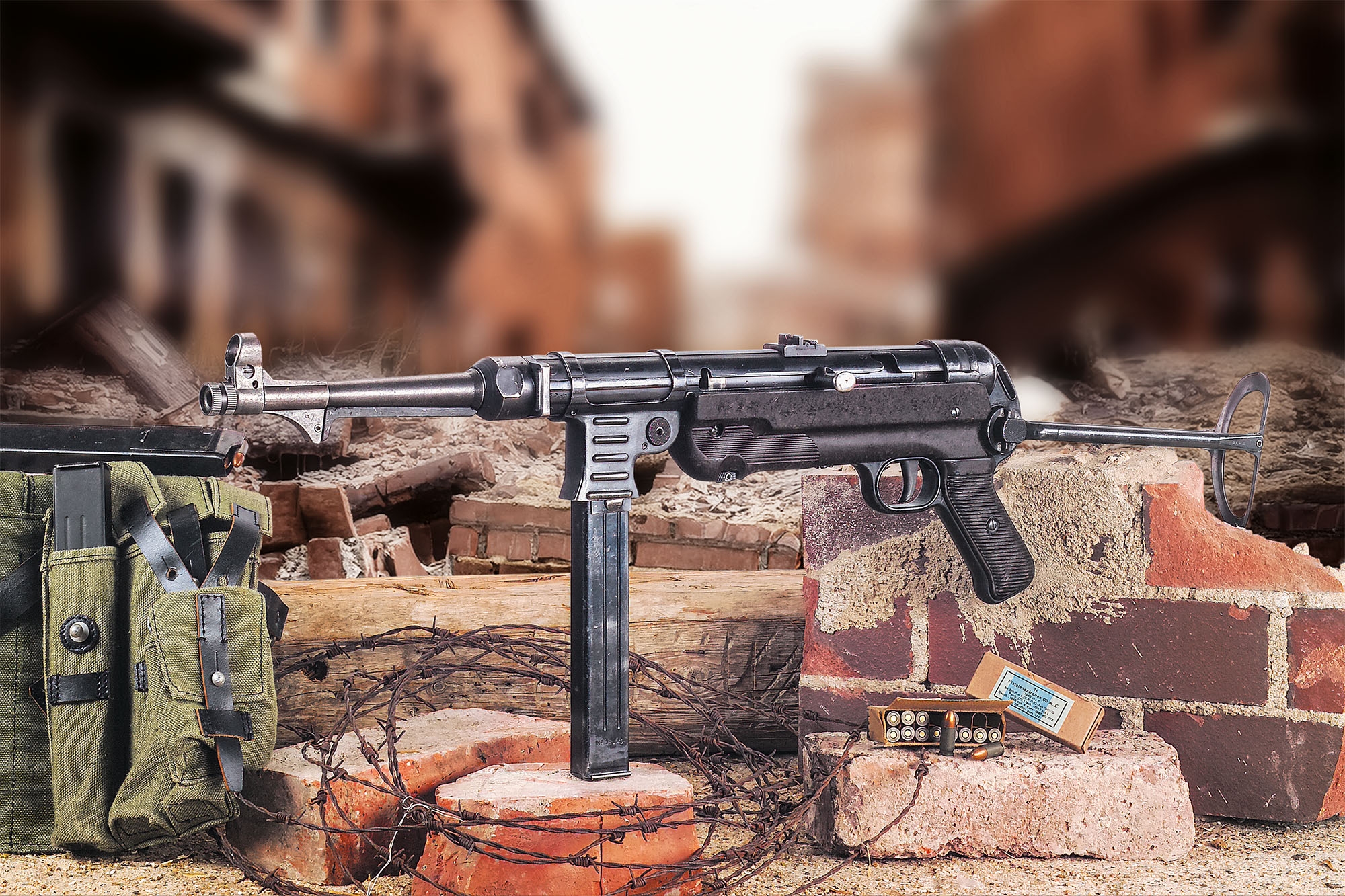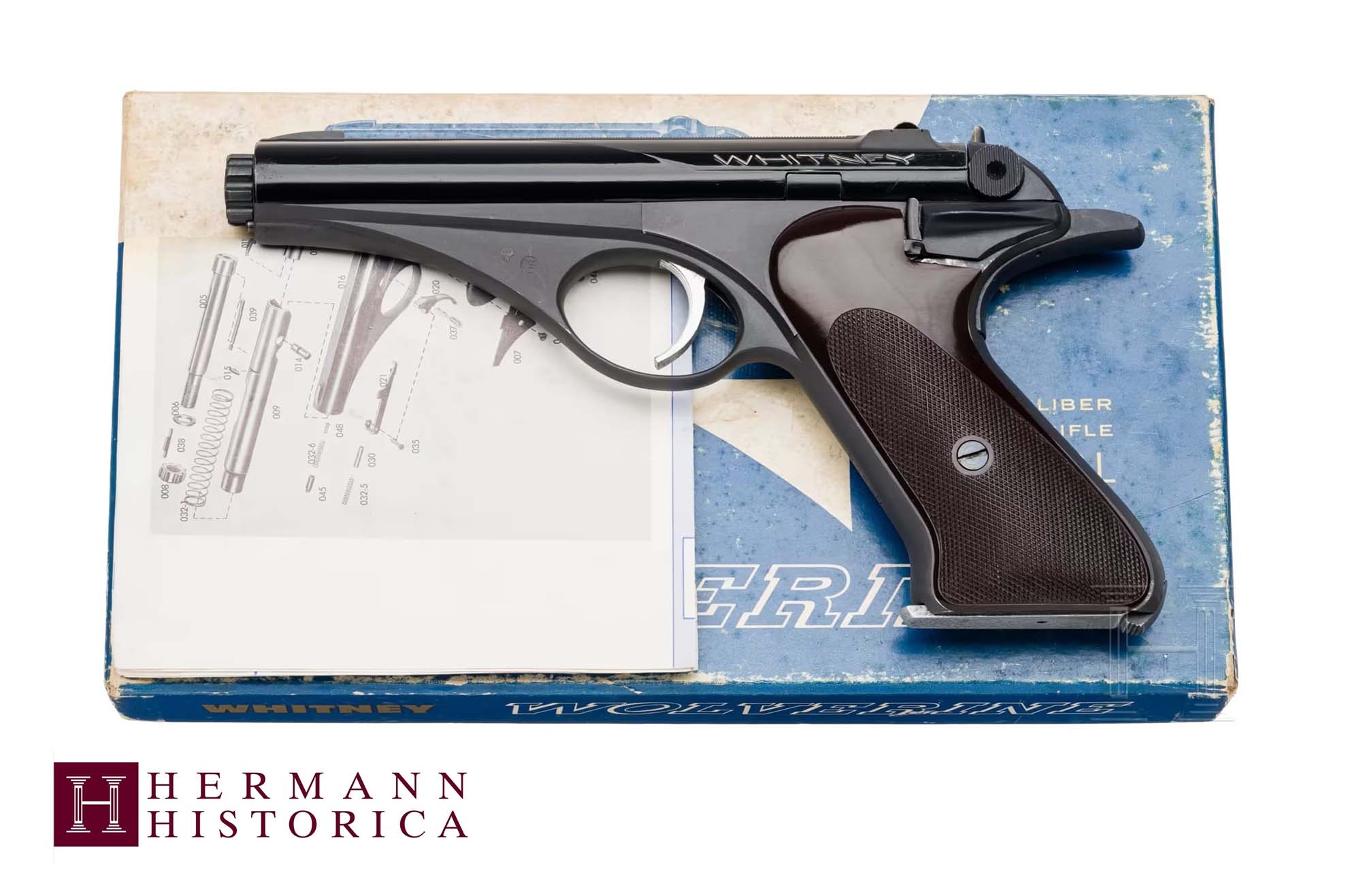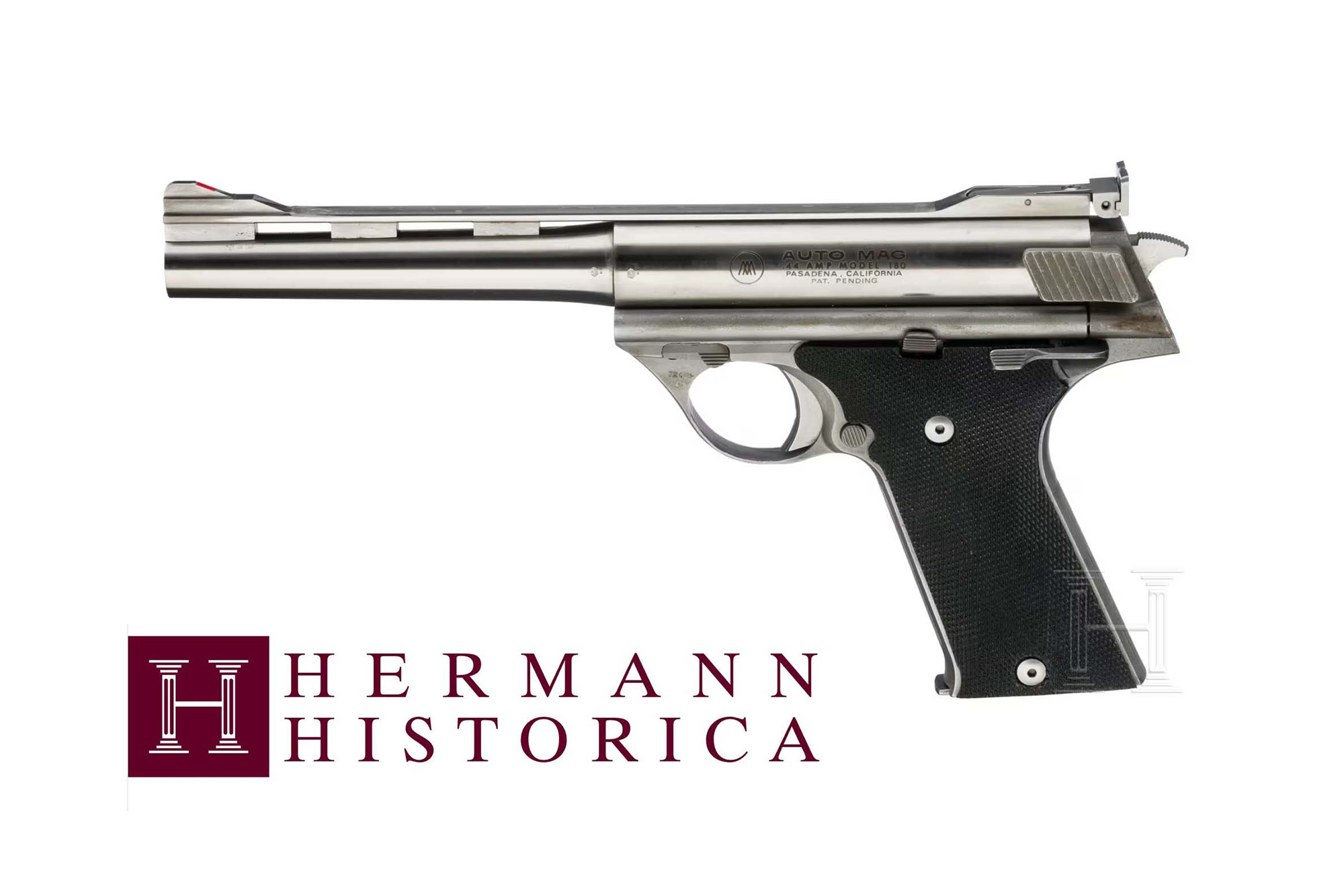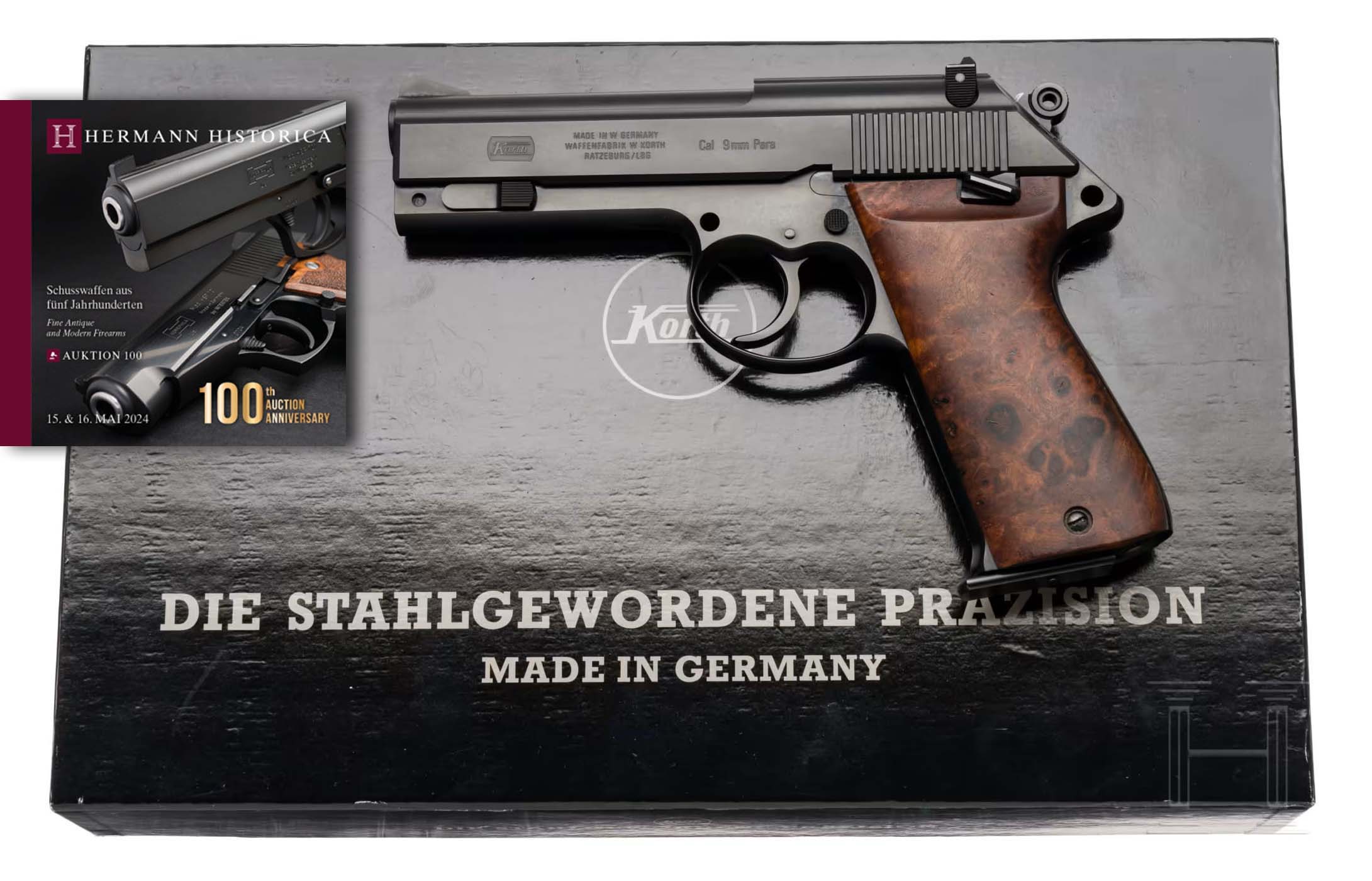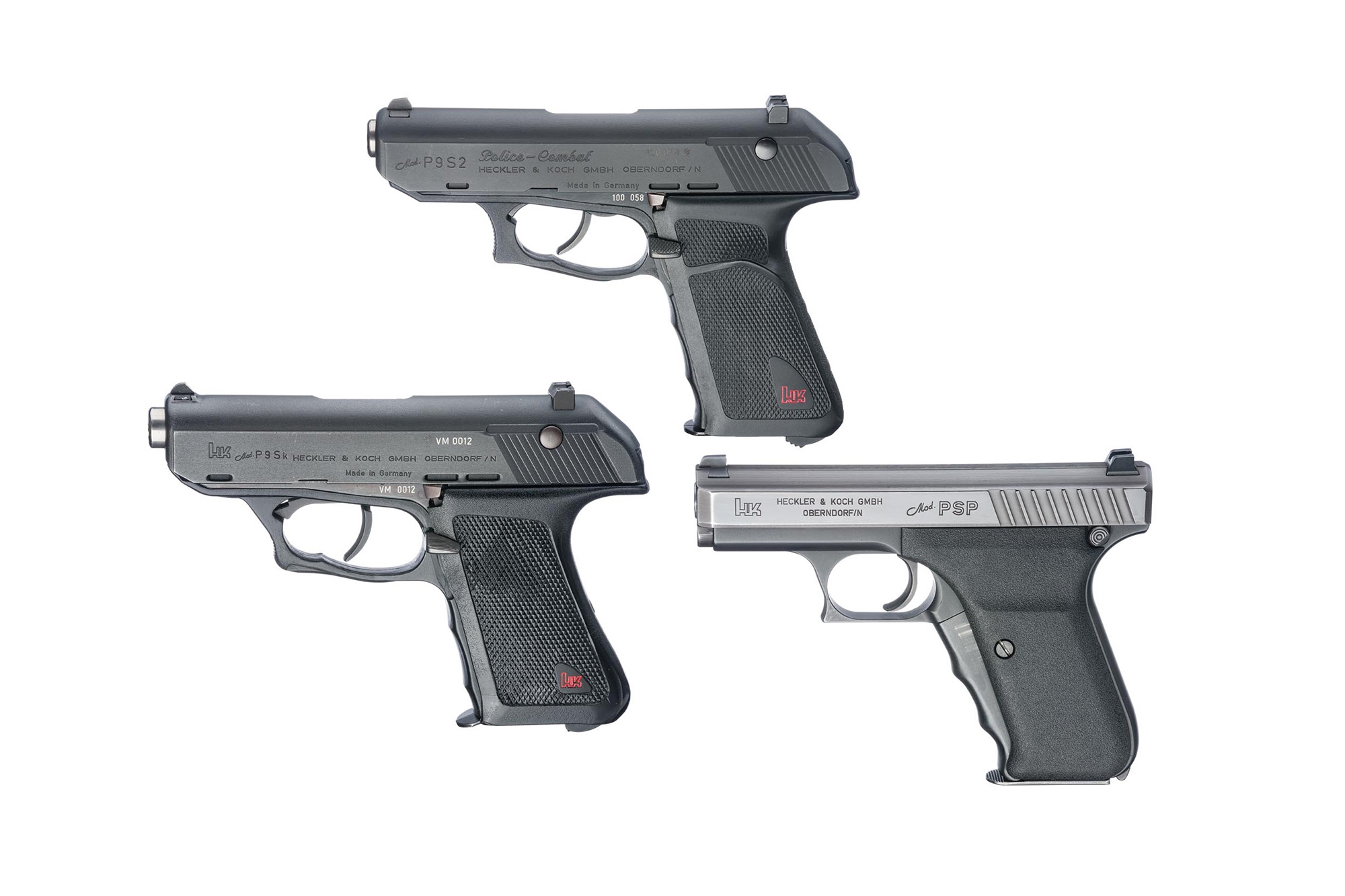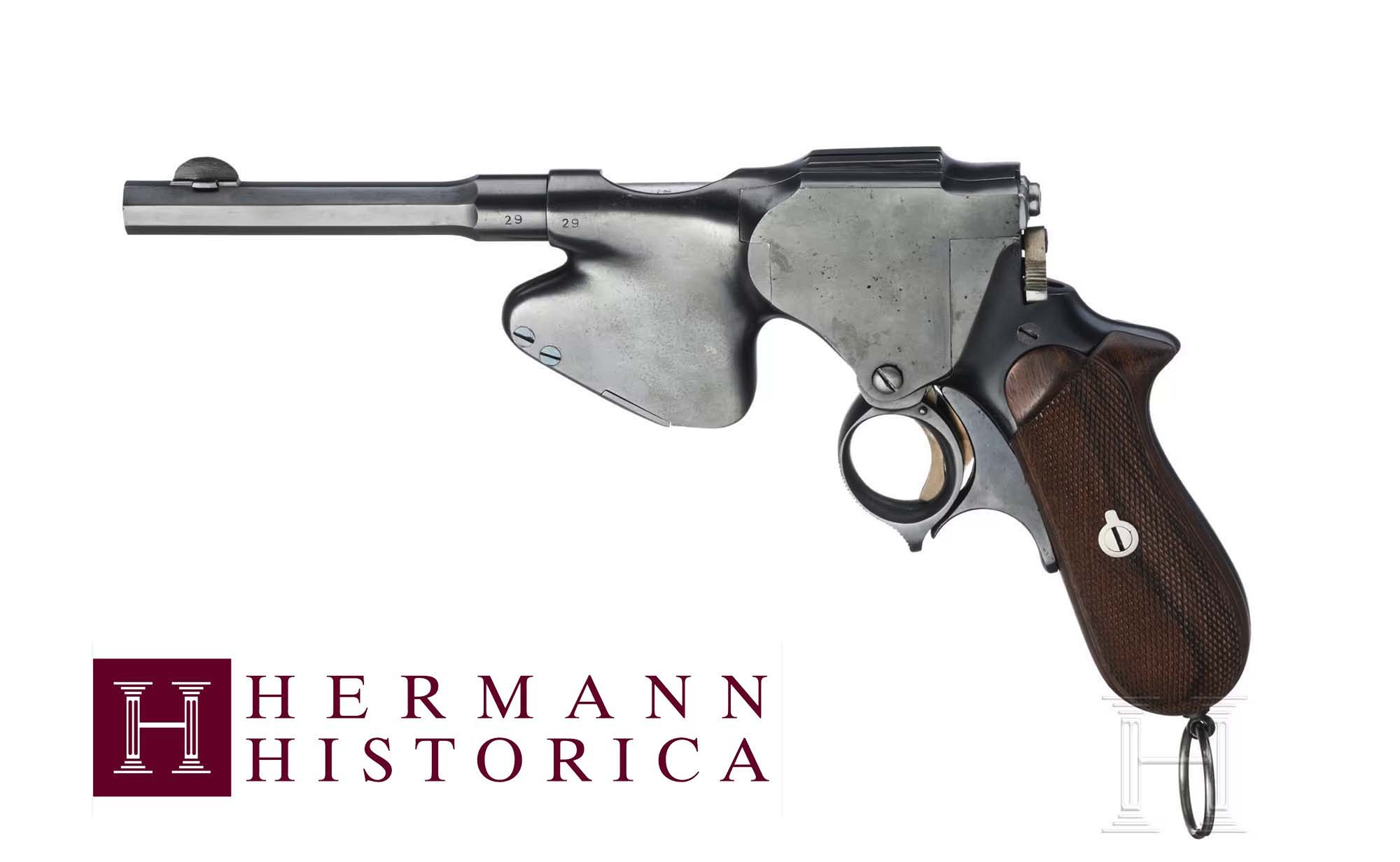"To the first, ...to the second, ...to the third!" Then a short, dry sound can be heard. The metallic clack as the auctioneer hits the top of the auction desk with the steel tip of his pen. "Sold for 23,000 euros to the bidder with the number... We come to lot... A Heckler & Koch PSP pistol in mint condition..."
The auctioneer's voice is calm, clear and distinct. He routinely recites the most important information about the item on offer and then moves on to the bidding. It is an auction at the Munich auction house Hermann Historica – a well-established marketplace for militaria, medals and decorations, antiques and firearms. These were not even included when the auction house was founded and were only added in 2000, but now make up a significant part of the business. “Fine Antique and Modern Firearms” is the name of the catalogue in which the auction items are carefully sorted, concisely described and lavishly photographed.
How the auctions at Hermann Historica work

The items designated as lots in the auction catalogue are also given a starting price. This is the price at which the auctioneer offers the respective item for sale. In contrast to the auctioneer is the hustle and bustle in the auction room. A crowd of customers has gathered here, some of whom are following the progress of the auction with considerable tension, waiting attentively so as not to miss the call for the coveted collector's item in order to raise their bidding card at the decisive moment. What follows is sometimes a veritable battle for the coveted items. Currently in vogue and with enormous price increases are the pistols from the German manufacturer Heckler & Koch from the 1970s and 1980s. Bidding takes place not only on site, but also by telephone, online or in writing in advance. Some of the items in the auction are so rare that customers are happy to dig deeper into their pockets to get their hands on the coveted piece. In addition to gun collectors, customers also include museum curators and gun dealers who want to replenish their stocks or fulfil specific search requests from their customers. Once the item has been awarded to a bidder, a sometimes complex process begins behind the scenes. First, the online catalogue is updated and the hammer price is now visible to everyone. Some customers who took part in the auction on site want to pay straight away and take the item with them, while other customers bid on other items first and then collect the entire purchase at once. However, some customers from abroad have to wait until they can add the auctioned item to their home collection. They have to wait for the invoice to be issued, obtain the necessary acquisition and import documents and present them to the auction house, which then has to apply for the necessary export licences. Only then can the item begin its journey to its new owner. It often takes months between the auction and receipt of the gat the buyer's place of residence.

Starting price, hammer price, buyer's premium, buyer's premium, post-auction sale – five important auction terms explained simply
The starting price is the price at which an item is offered in the auction catalogue and at which the auctioneer begins the auction, unless there are already several higher written bids. In this case, the lot is called one bidding step above the second highest bid.
When a lot has reached its highest bid, it is referred to as the hammer price. This is the price at which the auctioneer awards the lot to a bidder after it has been called "for the third time". The hammer price is typically higher than the starting price – but it does not have to be. If only one bidder bids on the lot, the hammer price is equal to the starting price.
The winning bidder pays a premium in addition to the hammer price. This is part of the remuneration for the auction house. The premium at Hermann Historica is currently 29.5% and also includes the statutory VAT.
The consignor receives the hammer price for his item minus the so-called buyer's premium. This is another part of the remuneration for the auction house, which also finances part of the costs of producing the catalogue. The buyer's premium at Hermann Historica is currently 20%, again including VAT.
If an item is not sold at auction, it can be purchased in the so-called post-auction sale. Here it is possible to buy it at the starting price plus the buyer's premium. The post-auction sale begins immediately after the auction of the respective item and typically lasts six weeks.
Before that: how firearms come to auction at Hermann Historica

It is also interesting to look at the other way round. That of a firearm until it is called by the auctioneer in the auction. It all starts with the owner's desire to make a profit on one or more guns. Entire collections are often broken up and high double-digit, sometimes even triple-digit numbers of guns are offered for sale in this way. These firearms are often accompanied by a wide range of accessories. These can be gun pouches, slings, muzzle protectors or cleaning equipment, but also tools, instruction manuals and training material. The customers on the consignor side are just as diverse as the customers on the auctioneer side. They are collectors, dealers, museums or simply the surviving dependants of gun owners who want to place the inherited item on the market. It is precisely this point that makes the realisation so interesting. Laymen are often unable to correctly assess the collector's value of a gun on the international market and would be prepared to sell a rare 08 pistol to an authorised person for a moderate amount. Gun dealers may lack the clientele for high-priced treasures from the world of collectors and enthusiasts in their shops focussing on hunters and sport shooters. However, the decisive factor in choosing a renowned auction house is often the good feeling of achieving a good market price, because "the customers determine the price". This means that nobody needs to be annoyed if they later find out that the item they sold to a fellow shooter at a favourable price would have been worth much more. Hermann Historica auctions the guns on behalf of its customers. However, the transaction is then handled by the auction house as an arms trading company. This means that the buyer does not know who consigned the gun and the seller does not know who bought it. An anonymity that is appreciated in collector circles.
Firearms valuation at the Hermann Historica auction house by experts
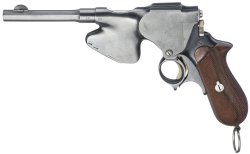
Incidentally, the starting price in the auction is set by the auction house's expert – after a detailed appraisal of the item. Questions about the manufacturer and model, rarity, originality and state of preservation play an important role in the valuation. Availability on the market, price development in recent years and current trends also play a role. Different legal classifications in the countries of Europe, especially for historical firearms, often lead to certain differences in demand and therefore also in pricing. A circumstance that can pay off in hard cash for both buyers and sellers. What characterises the experts at Hermann Historica is a trained eye, a wealth of experience and the ability to compare a piece to be valued with other firearms stored at the auction house. Questions about the originality of a bluing, for example, are easier to answer if several pieces can be used for comparison. The expert then prepares the text for the catalogue and commissions the photo – in the case of expensive guns, several photos and possibly also a translation of the description. Finally, the individual descriptions are sorted in order to form a coherent sequence in the catalogue. The auction catalogue then forms the starting point for the next auction. It often begins with incredulous amazement at the rare firearms that have once again been put together into an offer, reveals certain developments on the market in the starting prices, prompts the collector's heart to check the available funds and purchase authorisations and then, on the day of the auction, to hope, fear or discuss with other fellow collectors. And everyone waits for the redemptive click of the steel pen tip – whether consignor, bidder or just a spectator. The excitement is practically always there.

Hermann Historica celebrates its anniversary. The next auction on May 6, 2024, will be the 100th auction
The firearms catalogue alone contains over 1,000 lots. Once again, an exceptional catalogue with rare guns from five centuries of firearms history has been put together for customers. An absolutely exceptional piece is certainly a magnificent wheellock rifle of the Austrian Emperor Ferdinand III. A Bittner repeating pistol marks an important development step on the way to the semi-automatic pistol commonly used today. Also on display, a Parabellum pistol carbine model 1902 and several of the luxury pistols designed by Edgar Budischowsky called Korriphila. The flyer, which also shows exhibits from the other auctions, offers a foretaste of the upcoming auction.
We have already published a detailed overview of the highlights of the auction here on all4shooters.com.



